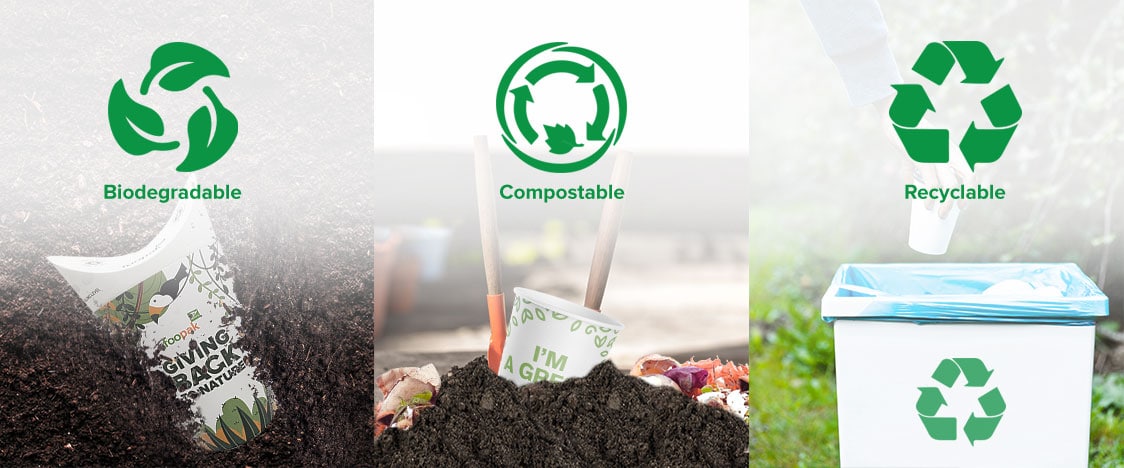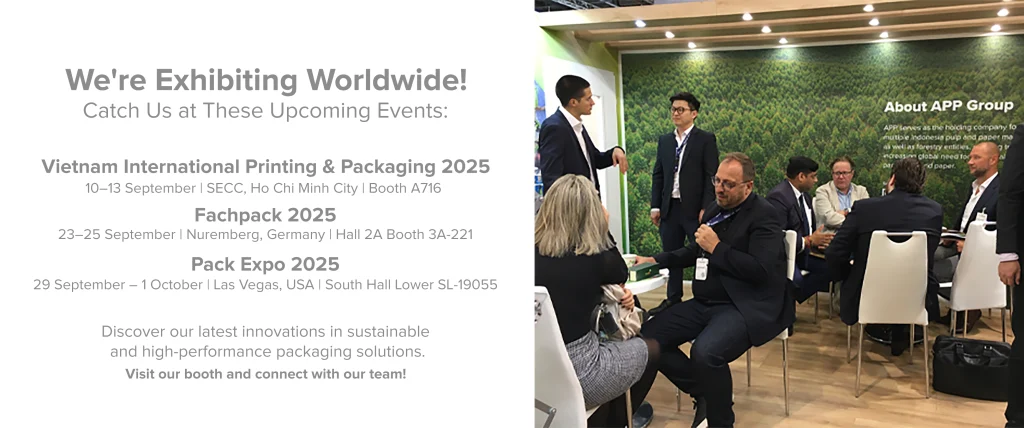Have you ever thought, when you buy food and drinks, you pay attention to the packaging design? Without realizing it, the design and packaging materials affect our interest in purchasing and consuming the food and making repeat purchases. And do you recognize the logos in the packaging design? What is the purpose and meaning of the inclusion of these logos?
Here we will discuss the logos used on paper cup packaging, both as a place for drinks and rice bowls in high demand. Some of them are biodegradable, recyclable, or compostable logos. Let us see the difference between them.
Biodegradable is the ability of material to be decomposed by microorganisms (such as bacteria or fungi) and naturally under favorable conditions such as temperature, humidity levels, with or without oxygen, and solar heat. Therefore, these microorganisms can decompose the materials naturally, without the specific timeline; it can be weekly, monthly, yearly, or even hundreds of years. The vegetable can decompose in weeks; paper can decompose in several months. Even plastic can break down into small pieces named micro-plastics. However, it does not guarantee that the degraded plastic material is non-toxic and 100% safe for the environment.
Compostable is the ability of a material to biodegrade naturally with the support of human hands, using organic raw materials, water, oxygen, and other ingredients to compost it properly, and have the ability to nurture the land. There are two types of compost: home compost and industrial compost. Home compostable material receives more praise than industrial compostable material since everyone can do it at home with the right composting method. More often, the industrial compostable material will end up in landfills.
Recyclable is the ability of a material to reprocess into other products or put into a recycling machine to be reused in the process. We can take an example with paper cup waste; then it is recycled back into recycled pulp and can reproduce again into other products such as container boxes or duplex board.
So, you must understand the difference between biodegradable, compostable, and recyclable, including the appearance of some logos to determine the product’s end of life. Be more aware and care about the food packaging that we often use, not only the products content but also the packaging used, so that we can take immediate action to protect the environment and its sustainability for the next generation.
Currently, PT. Indah Kiat Pulp & Paper has succeeded in developing Foopak Bio Natura, food and beverage packaging paper for compostable cups (both industrially and home compost), biodegradable, and recyclable. This product is certified recyclable (can be recycled) according to EN13430, biodegradable (decomposed by itself) according to EN13432, and compostable (can be composted), both industrial and home compostable. Additionally, Foopak Bio Natura, in mid-2021, has received the Flustix certificate with a dark blue label as a plastic-free product. Thus, Foopak Bio Natura products are genuinely environmentally friendly and sustainable food and beverage packaging paper within the food industry’s increasing use of plastic-lining packaging paper.
From this moment, let us be wiser in choosing food and beverage packaging products, select products which have a tremendous environmental impact. Every small step we take gives value to substantial changes happening around us. Let us spread this spirit!

